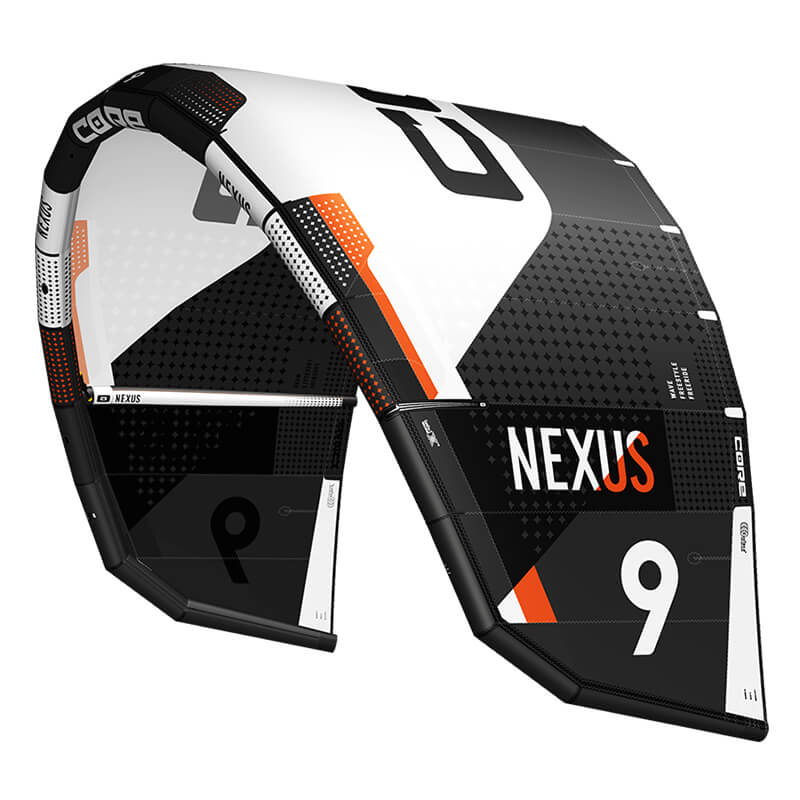When you purchase gear through links on our site, we may earn a small commission. Here’s why you can trust our tests and our affiliate partner.

The Nexus has been a stalwart of the CORE range, with that cross-discipline easy handling which many riders know and enjoy. The Fehrman-based German brand have proud roots in Europe, but test on an international scale with a close-knit team and a massive range of skillsets and specialties, which is highly important when designing a Swiss-army-knife kite that needs to perform in a wide range of conditions and contexts.
The bare-bones platform remains familiar visually; with that now classic three-strut mid-aspect kite with swept wingtips, it’s a future C-shape industry benchmark. The twin pulley bridle carries over from previous models and balances load evenly across the leading edge at every angle you can throw the kite into.
Technical changes for version four include a slimmer leading edge tube, noticeably reducing drag and limbering up its general mobility from the previous kite. It seems to fly forward far more eagerly. Bladder materials have also been revised for something more lightweight which saves around 200g per kite on average. The larger sizes are significantly different in shape and design, and optimized for light wind. ExoTex 2 low-stretch Dacron is utilized for the tubes making for a stiff airframe and a robust yet light three-core ripstop forms the canopy. Grintex patches cover the key wear areas on the leading edge segments and strut tips.
We think one of the most significant and tactile improvements this year is found in the handling and climbing ability. Even in the larger sizes, things are extremely crisp, smooth and fast on the bar, giving the kite excellent agility and drift. This has a great knock-on effect into wave and foil use where these attributes are absolutely key. Its crossover into a wave kite now is so strong it raises a question as to whether CORE’s wave-specific Section model is necessary for all but the 100% wave focused rider. It’s definitely starting to step on the Section’s toes.
Trim options are also a key factor for a desert-island kite, and the Nexus has all the variables covered. There’s three tuning points for steering on the wingtip hang points, letting you adjust the turning speed; slow it up to unhook with, or ramp it right up for more pivotal turning on the wave. On the leading edge the CIT settings carry over from the previous model, which always amazes us that such a visually small adjustment makes a significant effect on the kite’s behavior, which is a testament to the bridle tune. This can bias the kite towards wave or freestyle or a neutral setting in between. There’s also three different knots on the steering pigtails to adjust rear line tension and bite point on the bar. The bar throw is extremely progressive in its feedback and power delivery, and provides a smoothly throttled response from the kite, giving you extra control and predictability through your maneuvers, be it freestyle or on a wave.
With a plethora of Big Air kites currently in vogue on the market, we felt the Nexus holds its own particularly in the larger sizes where the rapid turning speed and decent lift on sheet will let you crank out a decent loop on a much larger kite than normally anticipated.
With all-rounders perhaps one of the most difficult kites to get right, CORE continue to smash it with the Nexus, with the fourth version being even more refined and versatile than before and a worthy upgrade for the serial Nexus fan. The trim system is genius – as an aging multi-discipline shape shifter like myself, it allows you to quickly tune into any situation you find yourself in and eke more performance out of the kite. If you’re not a natural tinkerer, leave it all as standard and you have a beautifully balanced and performant tool. Smooth, versatile and applicable to all situations, the Nexus 4’s speed and precision make it a freerider’s dream and a trustworthy ally to travel with.
